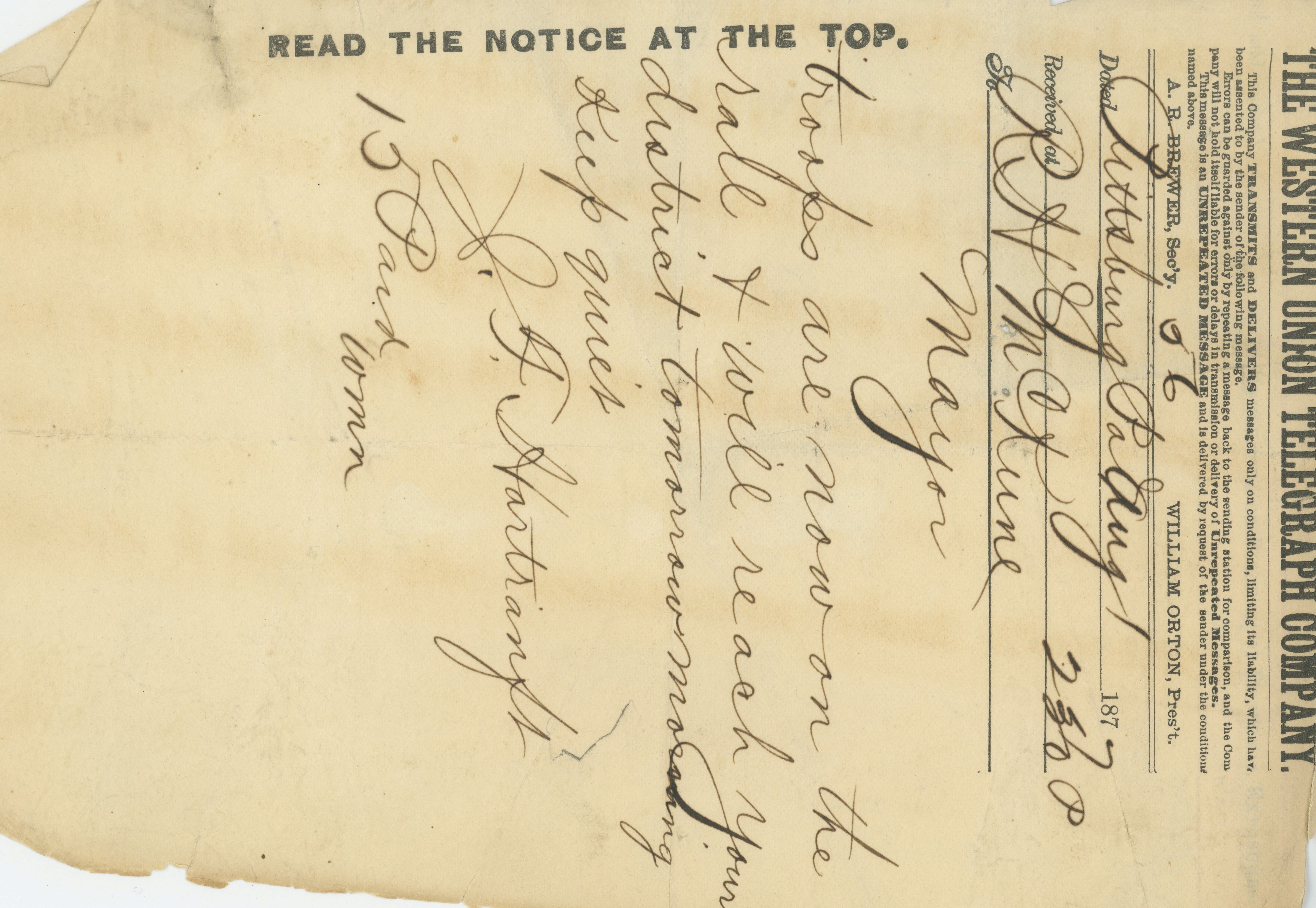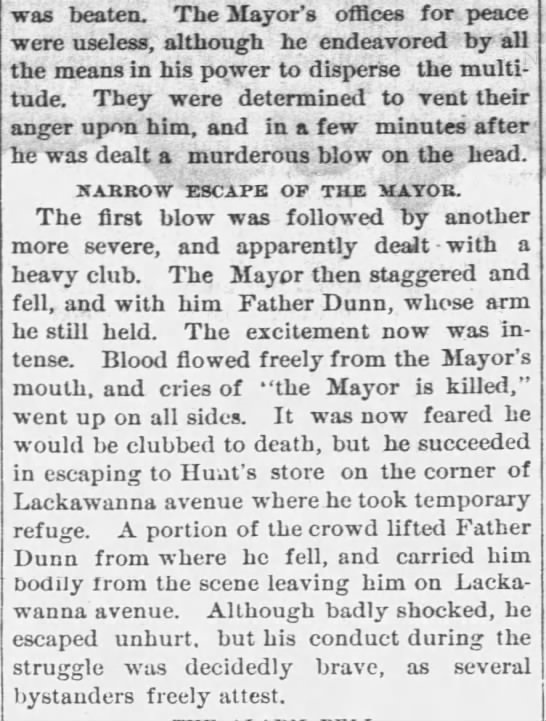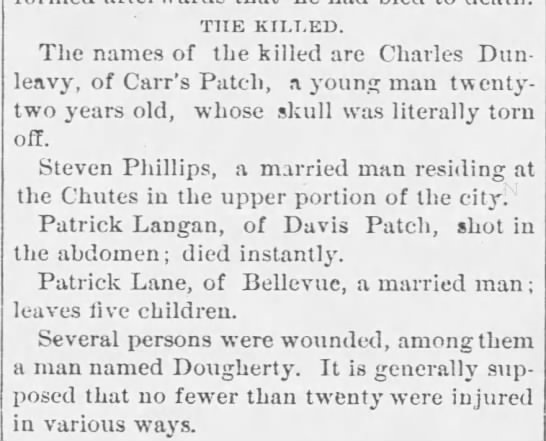The Great Railroad Strike of 1877 and Robert McKune: August 1st (Series: Part 7)
August 1, 2020
Only one item exists for August 1st in Mayor McKune’s documents, a telegram from Governor Hartranft informing the Mayor that reinforcements would be in the city soon.

Pittsburg Pa Aug 1 1877 RH McKune Mayor Troops are now on the rail & will reach your district tomorrow morning. Keep quiet J.F. Hartranft
The lack of documents from August 1, 1877 is potentially the result of it being the most eventful day during the strikes. During the morning hours, a group of a few thousand workers began to assemble near the Silkworks in the south side of Scranton. A letter allegedly signed by William Walker Scranton threatening to cut the worker’s wages to thirty five cents a day soon made its rounds throughout the group. Already angry at the recent wage cuts, the strikers split into two groups. One was marching to the Lackawanna Iron and Coal Works, which was managed by Scranton, while the other group moved towards the Delaware, Lackawanna, and Western Railroad shops downtown.
Mayor McKune, who had initially thought the gathering was more peace talks, alerted the Scranton’s Citizen’s Corp before meeting the group himself. He was able to briefly stop the progression of the group of strikers moving downtown in the intersection of Lackawanna and Washington Avenues. Aided by Father Dunn, a priest at St. Vincent Cathedral, McKune was able to calm the crowd for a brief moment before being attacked himself with a club held by one of the strikers.

By the time the Citizen’s Corps arrived on the scene, the Mayor and Father Dunn had already been attacked. Mayor McKune would give the order for the Corps to fire upon the crowd, which had previously declared him dead. After about three minutes, the shooting stopped and the strikers dispersed leaving four dead and many wounded. The exact numbers of wounded are unknown due to the strikers fears of being fired after confessing to being part of the strikers.


